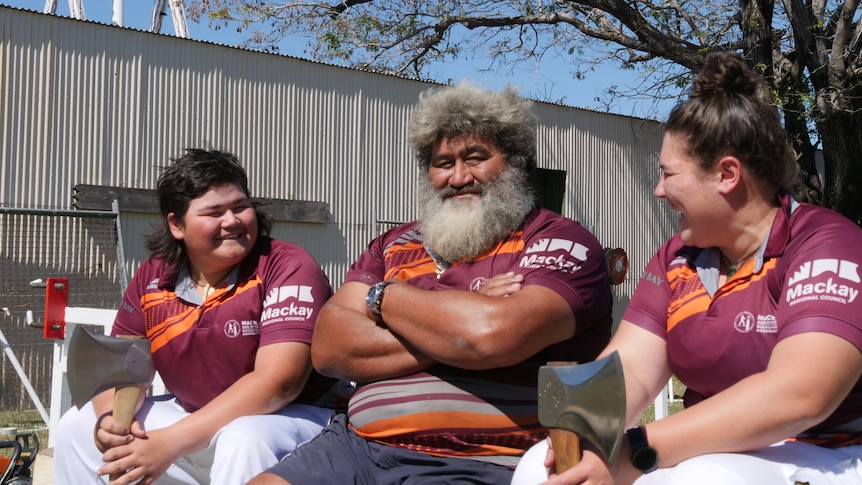
Furlyn Barrett, a seasoned axeman from Mackay, Queensland, beams with pride as his children carry on the family tradition of competitive woodchopping. Barrett, who received his first axe at the tender age of five, is part of a long lineage of axemen that includes his father, uncles, and 22 cousins. Now, his four children are making their mark in the sport, traveling across the country to compete in various woodchopping events.
Among his children, Takiah Barrett, 24, has achieved significant recognition by representing the Australian women’s team and clinching the women’s underhand world title championship in Sydney. Meanwhile, her brother Awatea, 20, emerged victorious in the national timbersports rookie championship in Melbourne last year. The Barrett family, deeply rooted in this traditional sport, continues to uphold and promote woodchopping at agricultural shows.
Preserving a Legacy in Modern Times
Furlyn Barrett’s commitment to the sport extends beyond competition. As a veteran axeman, he actively works to sustain agricultural shows by sourcing wood for competitions, such as the recent Townsville Show. The event features a range of woodchopping contests, including standing blocks, underhand, tree-felling, and open-sawing, with around 20 competitors vying for glory.
“Queensland has some very hard wood, so you don’t want to be chopping those,” Barrett explained. “We source woods that are not protected, that have no monetary value at all.”
Takiah Barrett, reflecting on her family’s involvement, expressed her satisfaction with their shared passion for woodchopping. “We give each other a bit of competition as well and courage to get through the log,” she said.
Challenges Facing the Sport
Despite the sport’s rich heritage, the number of competitors is dwindling, according to Queensland Axemen’s Association judge Sue Campbell. While spectator interest remains high, the financial burden of the sport is a significant barrier for many potential participants.
“It’s a very expensive sport,” Campbell noted. “The axe is worth about $1,000, if not more. Some of [the competitors] would have 70 of them, 80 of them.”
Travel demands also pose challenges, as competitors must frequently move between different woodchopping circuits. Nevertheless, Campbell remains optimistic about the sport’s future, emphasizing its deep familial connections.
“We only have one [competitor] that I’ve known of in the past 10 or 15 years that has come into the sport and had no connection to woodchopping at all,” she said. “It’s always grandads, or ‘My uncle did it’. Give us another five or six years and we’ll have a big influx again of the next generation coming through.”
The Physical Demands of Woodchopping
Woodchopping is not without its risks. Back injuries and occasional cuts are common, as competitors engage in high-intensity chopping sessions. “Some of those logs of hardwood will cut through in 23 seconds, and they’re really powering through it,” Campbell described.
To encourage participation, some agricultural shows have introduced woodchopping schools before competitions, aiming to attract new entrants to the sport. “We’re proud of our circuit up here and we’re proud of our chopping up here,” Campbell said. “It’s a fantastic sport and a fantastic community.”
Looking Ahead
As the Barrett family continues to excel in the woodchopping arena, they serve as a testament to the enduring appeal of this unique sport. With a new generation poised to take up the axe, the legacy of competitive woodchopping remains vibrant, promising to captivate audiences and inspire future axemen and women for years to come.






